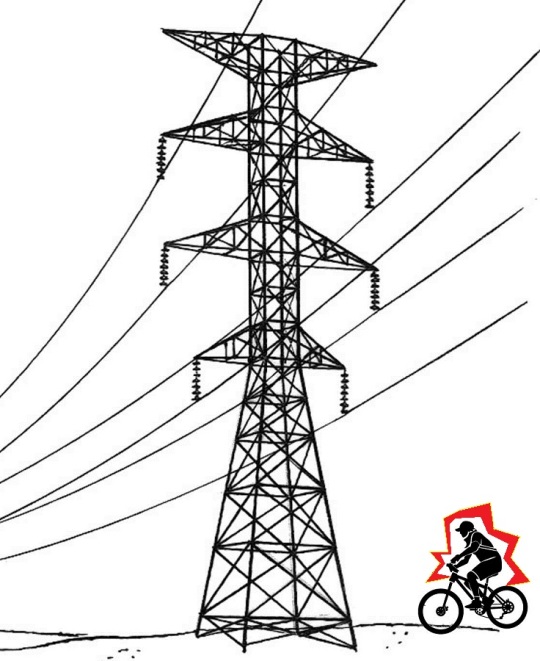Categories: Featured Articles » Interesting Facts
Number of views: 11154
Comments on the article: 1
Why under power lines
From time to time on the Internet you can find reports about how one of the cyclists was hurt by electric shock from his own bicycle when he was driving under a high-voltage power line with a voltage of 100 kV or more. No one can give exact and intelligible answers to such requests: disputes on this issue arise on the forums every now and then, however, many users of the network have guesses on this subject.
One thing when it comes about step voltage, this would be understandable if the wire detached from the power line were in contact with the ground, and then standing on the ground someone could accidentally find themselves in the wrong place at the wrong time and get under a dangerous step voltage.
This is a well-known phenomenon, for its reason in 1928 three horses died on the Leningrad pavement in one day. But in cyclist-led reports, there seems to be no talk of stepping voltage. Let us ponder this problem more thoughtfully, and try to find a clear answer.

So, a bicycle with rubber tires is isolated from the surface of the earth, therefore, the current from the ground to the bicycle cannot get, and even if, by accident, the cyclist would be at the scene of the accident, where some really measurable potential would be distributed on the surface of the earth, he would not have been shocked in this case either.
In addition, according to reports, the cyclist does not descend to the ground, and does not specifically grab any wires, which means that neither the power lines nor other wires directly supply the bicycle with power. Thus, direct electric shock from power lines is expressly excluded. Therefore, there is no other consideration left than to accept that the voltage on the bicycle is induced. It remains to be seen whether it is induced from the power lines by a magnetic component or an electrical component.
If we assume that the voltage is induced by the magnetic component on the bicycle, then recalling the Bio-Savard-Laplace law, we will immediately find that even if at the time the cyclist was driving under the wire, an alternating current with a maximum value of, say, 2000A flowed through the high-voltage line , then already at a distance of 5 meters from a wire 5 meters long, magnetic induction in its amplitude would be only about 40 μT, this is only enough to slightly disorient the needle of the magnetic compass. And the ability to direct directly without transformation any tangible tension on a bicycle frame 1 meter long ... I can’t even talk about this anymore. The option with electromagnetic induction is discarded as impossible.

Remains electrostatic induction. But there are all the possibilities for this. If we assume that a 220,000-volt high-voltage line passes above the earth’s surface at a height of 8 meters and is reliably isolated from it, then there is an alternating electric field between the wire and the ground, the intensity of which is distributed approximately linearly in height, and in amplitude can reach 27,500 volts per meter, that is, 275 volts per centimeter.
And although the bicycle does not come into contact with the ground, this is precisely the condition when the cyclist will still be pulled by electric current from it. The bike here acts as the bottom plate of the capacitor, and the cyclist - the top plate. This capacitor, with a dielectric in the form of air and clothes of a cyclist, is introduced into an alternating electric field and is constantly recharged with this field. And the cyclist is accidentally at the moment when this capacitor is charged, touch the bicycle, as he feels the discharge. Kill - will not kill, but there will definitely be discomfort.
If a person stood under the power lines with bare feet on the ground, then he would not have felt anything like it, since his whole body would have acquired zero ground potential.And standing on the ground under the power lines on a thin rubber rug, he would have received a similar blow by touching the ground with a finger near the rug. So it is with a bicycle, where the dielectric layer (read - a suit of a cyclist) is rather thin, therefore the electric capacity of the resulting capacitor is not so small as it might seem at first glance.
See also at e.imadeself.com
:
